These days, the Rubber Ducky Isopod is the darling of the bioactive terrarium world, and for good reason.
I mean, just look at them…
With their cute yellow duck faces and painted tails, they bring so much character.
Discovered in Thailand, the (relatively) new species – Cubaris sp. ‘Rubber Ducky’ – was found in limestone cave areas. So they have some unique care requirements compared to other isopods.
Find out where to find these beautiful creatures for yourself and how to care for them!
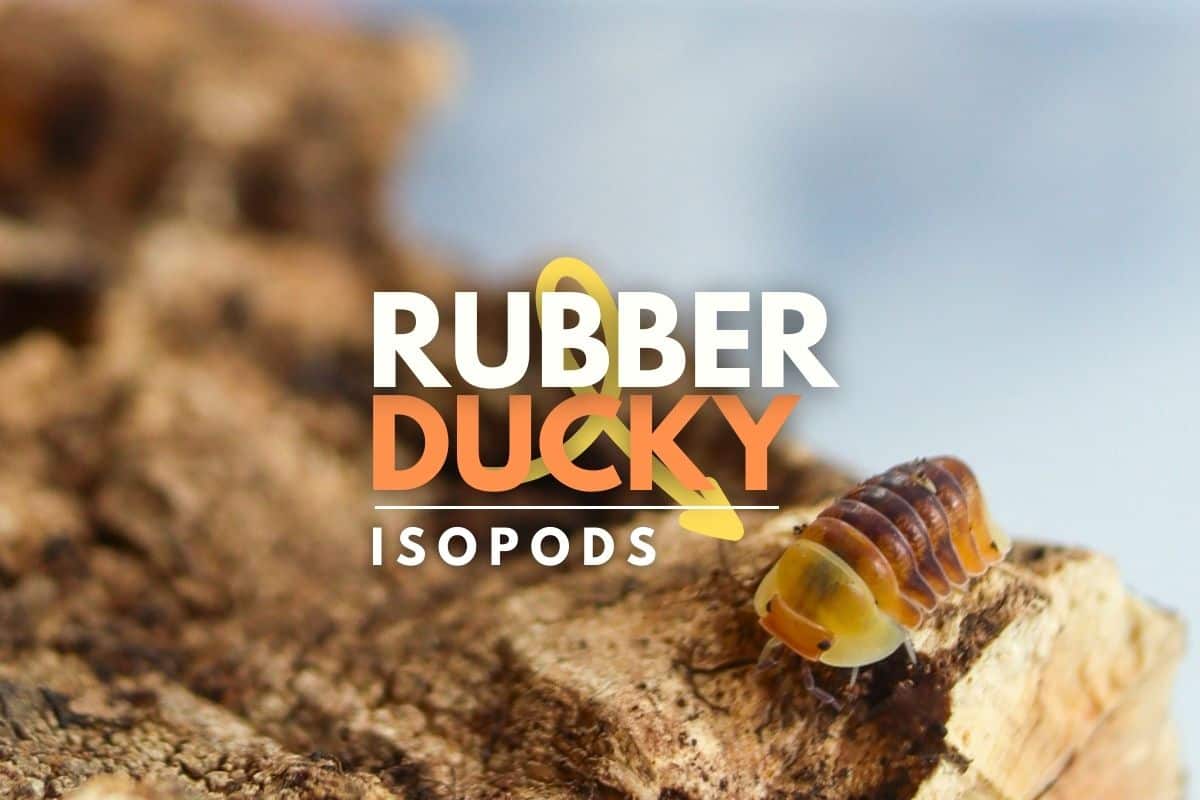
Terrarium Tribe is reader-supported. When you purchase through links on our site, we may earn an affiliate commission (at no further cost to you). 💜
Rubber Ducky Isopods: A Closer Look
Rubber Ducky Isopods really took the isopod world by storm a few years ago and opened up a whole new category.
Yet they still remain one of the rarer varieties on the market.
Even with lots of other Cubaris species popping up, the classic duckies can be difficult to find. Part of what makes these critters so rare is that they’ve been quite challenging to breed in captivity.
They’re also pretty slow to grow, taking a fair few months to reach maturity – so it can take a while to produce enough to sell.
Eventually, these cuties will grow a little bigger than the typical terrarium dwarf isopods, but they should max out around 2cm long. Making them still suitable for most reasonably sized terrariums/culture bins.
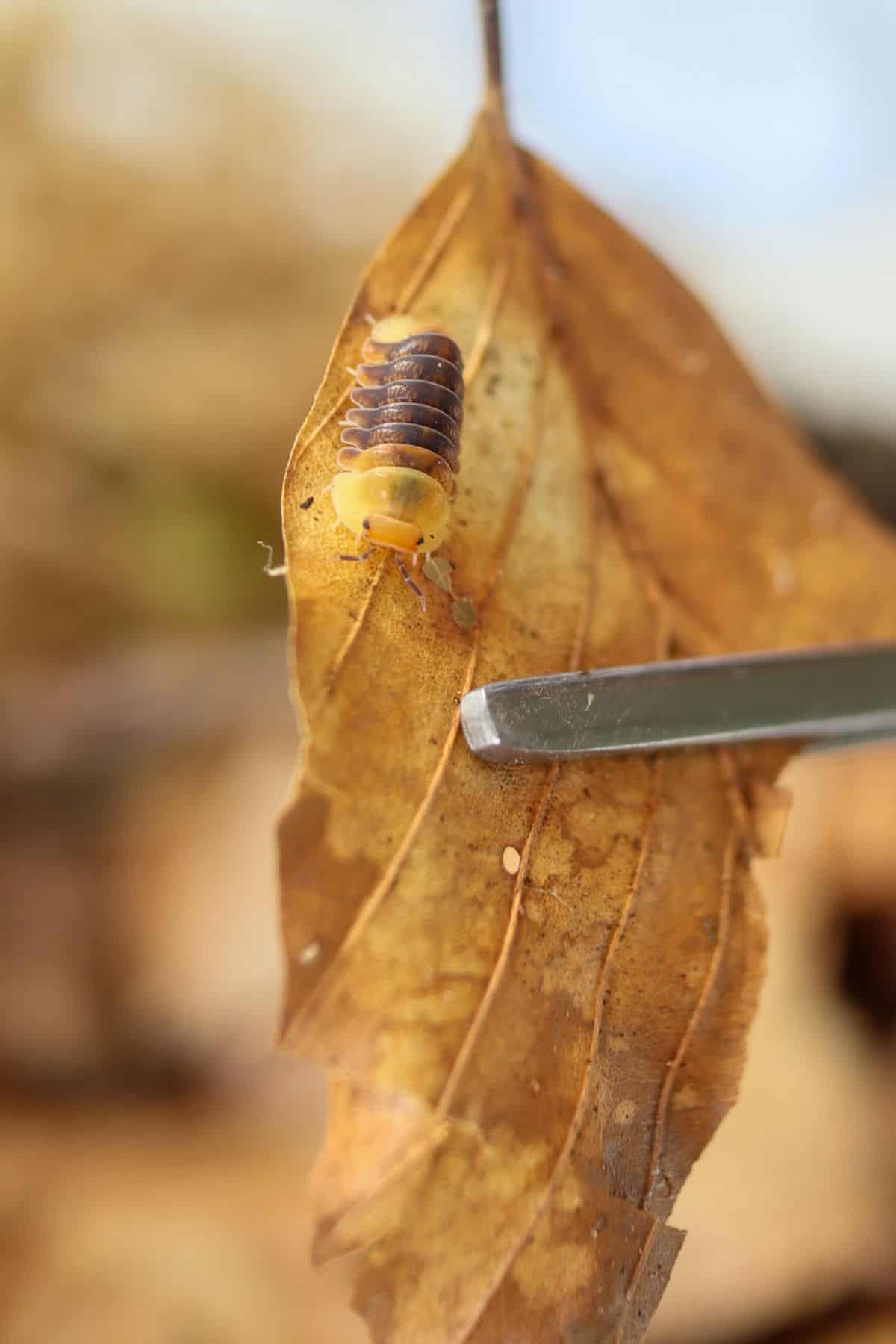
As far as behaviors go? They’re honestly pretty shy.
The moment they’re exposed, they quickly roll into a (albeit very cute) little ball.
Rubber Ducky Isopods also like to burrow, so they’re very good at hiding in the substrate. I sometimes see worried Redditors asking if their broods are okay because they haven’t seen them much in weeks!
Despite all that, they still remain super popular. They’re undeniably cute, and for the avid collector, you can’t pass up on the classics.
How to Care for Rubber Ducky Isopods
Habitat and Conditions
As you might expect, these tropical cuties tend to prefer damper conditions, warm temperatures, and high humidity.
I’d aim for 70-80°F (21-27°C), which is basically comfortable household temperatures.
Honestly, they’re an excellent fit for tropical terrariums, though most keep them isopod pets rather than bioactive custodians. I think there’s a lot more scope to explore their care in naturalistic settings.
Make sure you add some cork bark chunks to their enclosure, as they love to hide underneath there.
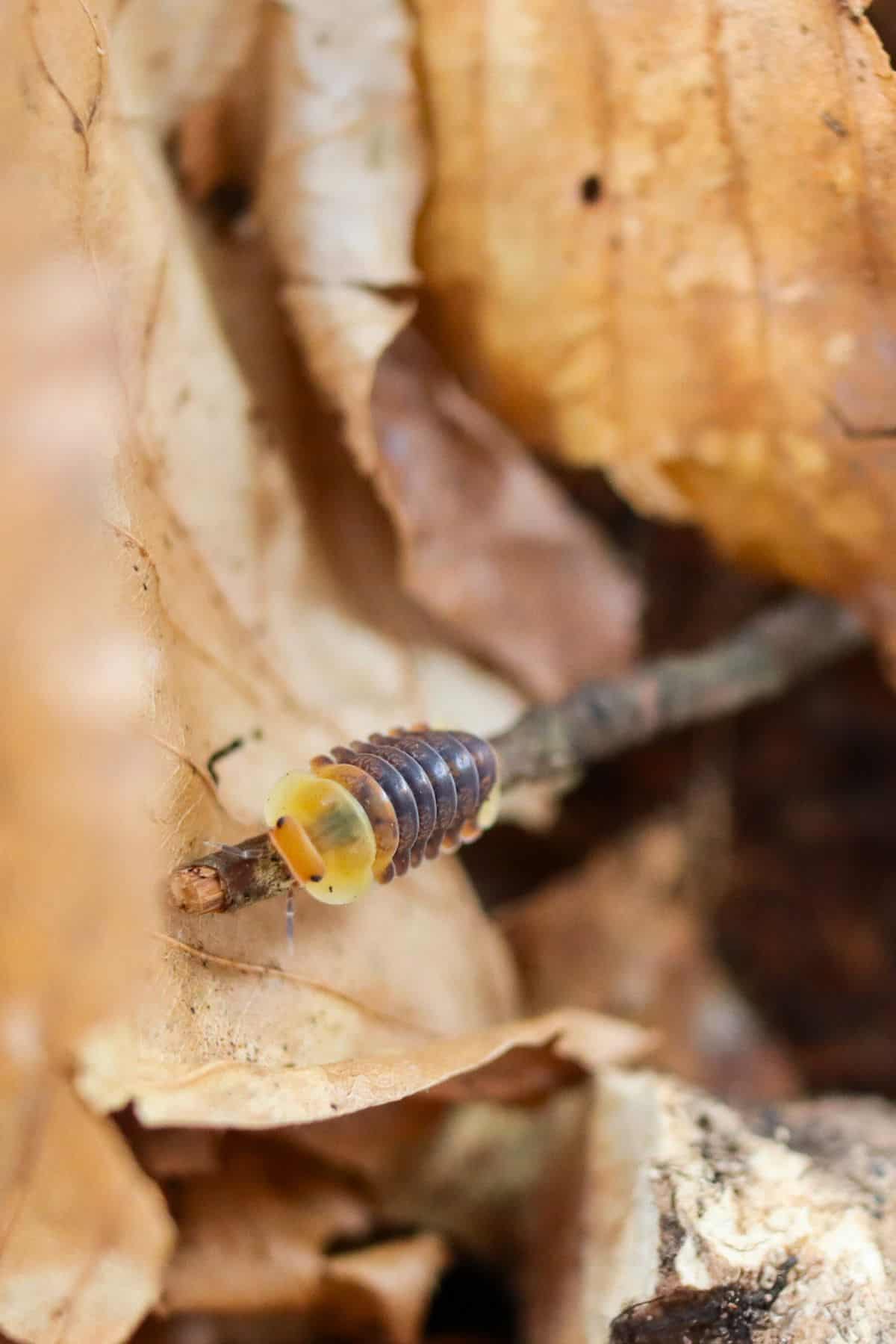
Food
Rubber Ducky Isopods like/need quite a varied diet.
Though out of all the species I’ve owned, these guys never seem to appreciate veggie scraps.
As with all isopod species, decaying wood and leaf litter are their primary source of food, but you’ll still need to supplement their diet with a protein source and, ideally, some limestone (more on that last one later).
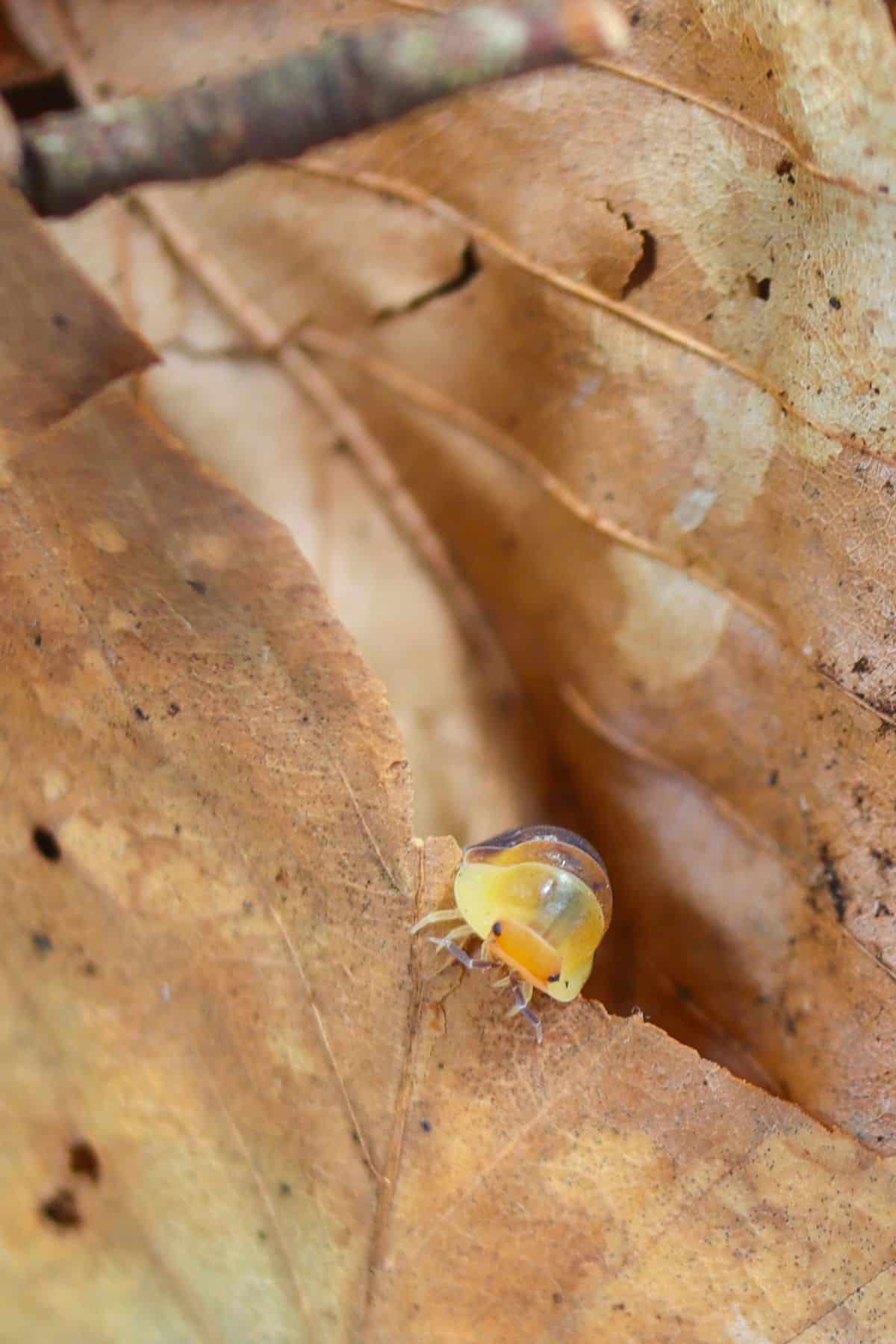
👉 Shop our organic leaf litter.
For protein, some people like to add dried fish, either whole (small ones like minnows) or in a flake form. It’s worth experimenting to see what they like. Just start small, as you don’t want your terrarium full of rotting food.

Pro tip: Our dedicated Isopod Superfood concentrate is a complete nutritional supplement (and a convenient way to tick all those boxes in one go).
Substrate
Substrate recommendations mostly fall in line with typical terrarium mixes but with a few added supplements. Here are some personal recommendations from experienced isopod owners.
“25% coco fiber, 40% chunked rotting wood, 15% leaves, and, 10% dried sphagnum moss, and finally about 10% pulverized limestone.”
@Derposour on Reddit
The coco fiber and sphagnum moss will help to maintain the higher level of moisture they prefer, and the wood and leaves are their primary food source.
👉 Shop our premium sphagnum moss.
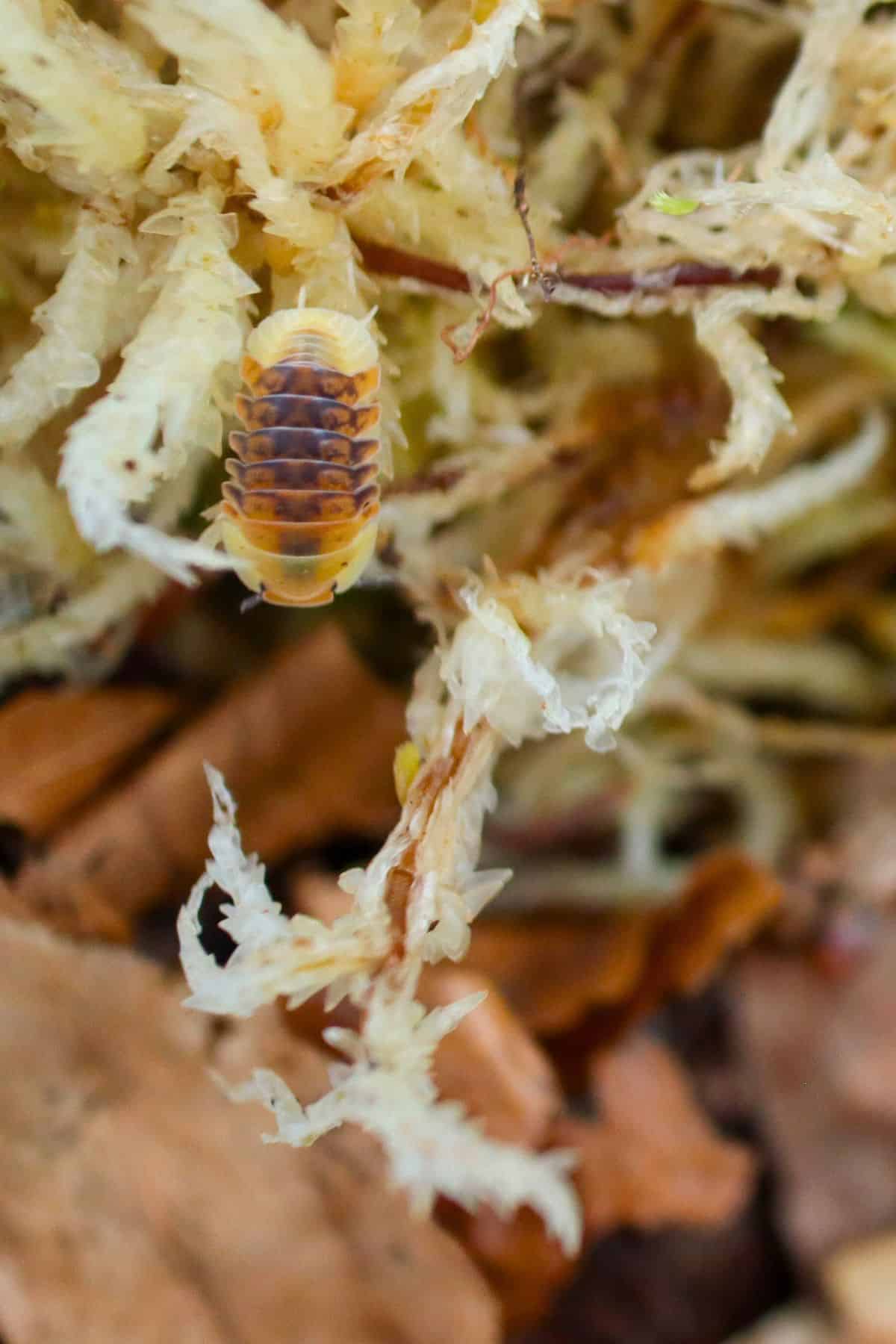
The limestone is an interesting one, though.
People have been adding limestone to the substrate mix with great results in order to recreate their natural environment accurately.
Limestone is a sedimentary rock that’s made up primarily of calcium carbonate, which they use to build their exoskeletons. Thankfully for us, calcium carbonate is actually a common gardening supplement that often goes by the name of “Garden Lime.”
It’s typically used as a soil supplement to increase the pH for plants, but it’ll work a treat here.

Finally, with their shy nature, Rubber Ducky Isopods seem to like a deeper substrate layer that they can burrow into.
A Final Word on “Ducky Isopods”
Have you been one of the lucky few to get your hands on the Rubber Ducky Isopod?
If not, we have plenty of other “Ducky Isopods” (like the Blonde Ducky Isopods) or other types of Cubaris isopods for sale on our online store.
Let us know how you’re getting on in the comments!
For more funky isopod inspiration, check out my guide to isopod species, or just go ahead and dive straight into our collection of isopods for sale.

Hey, since we don’t know much about this species since it was only discovered a few years ago, I thought I might say that I got babies from my Rubber Duckies. I noticed them yesterday, two months after I bought the parents. One of the females must have already been pregnant, but I figured it was also possible that they might have somehow reproduced quickly.
Congrats! Thanks for sharing, it’s always good to hear anecdotes for these kinds of things.
Just ordered 5 today!
I have 9 and they FINALLY had babies. I use dolomite mix and a cuttle bone for my isopods…I also make a isopod mix that is hard wood pellets (untreated) spagnam moss topsoil (organic) dolomite, and ground up leaf litter (i harvest from a local swamp that doesnt use pesticides) I had 7 months and noticed babies yesterday!
I saw 1 baby after 2 weeks of getting duckies, not sure if there’s any more. Unfortunately 1 adult passed away 2 days after I noticed mancae. It’s hard to say the reason, 5 of them seems to be full adult, not sure their age, maybe they are old. Hopefully it wasn’t environmental cause and I won’t see any more deaths.
Rubber Ducky isopods are the most difficult isopods to keep, but they are still easier than the easiest pet reptile! I recommend trying out pet rubber duckies before getting a pet reptile.